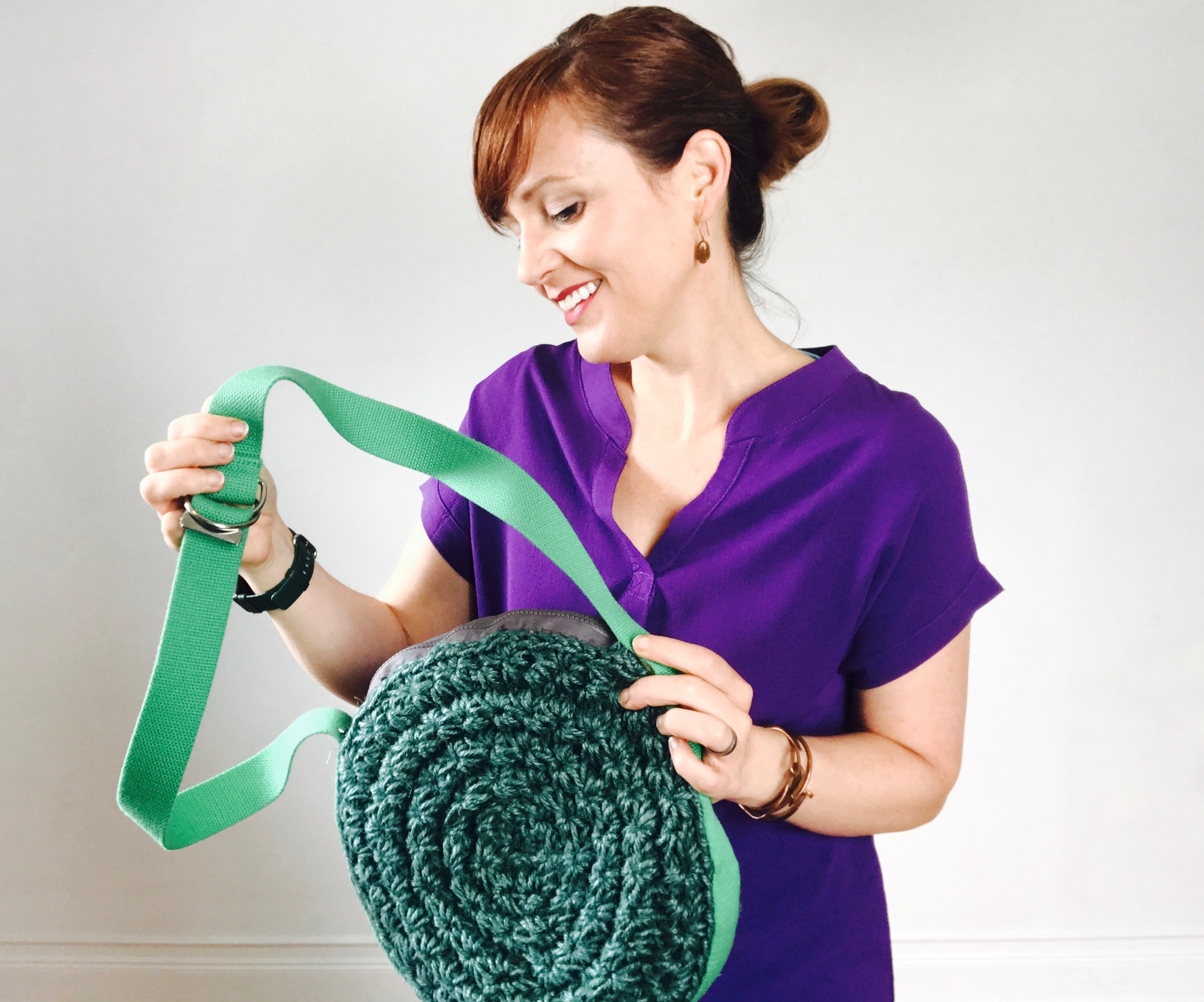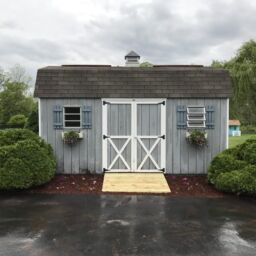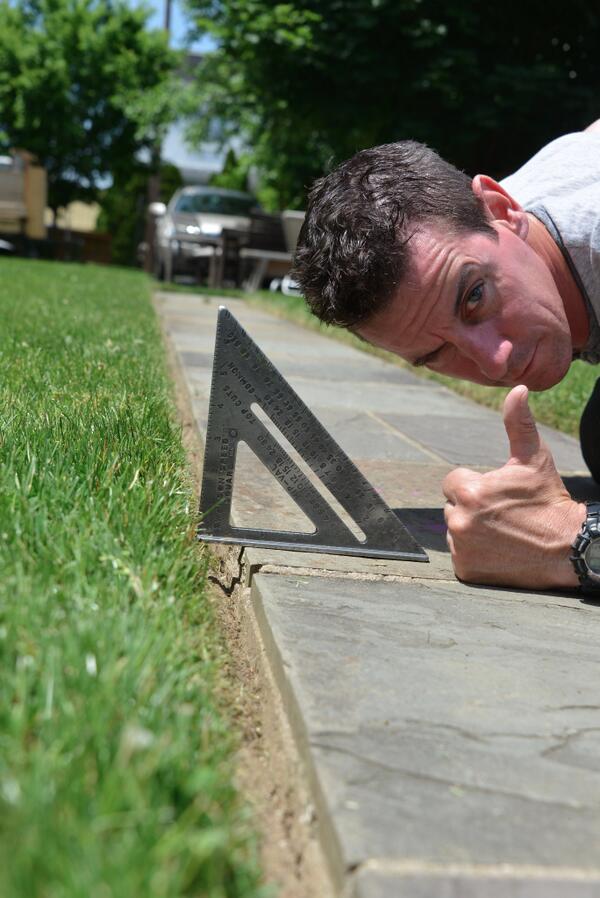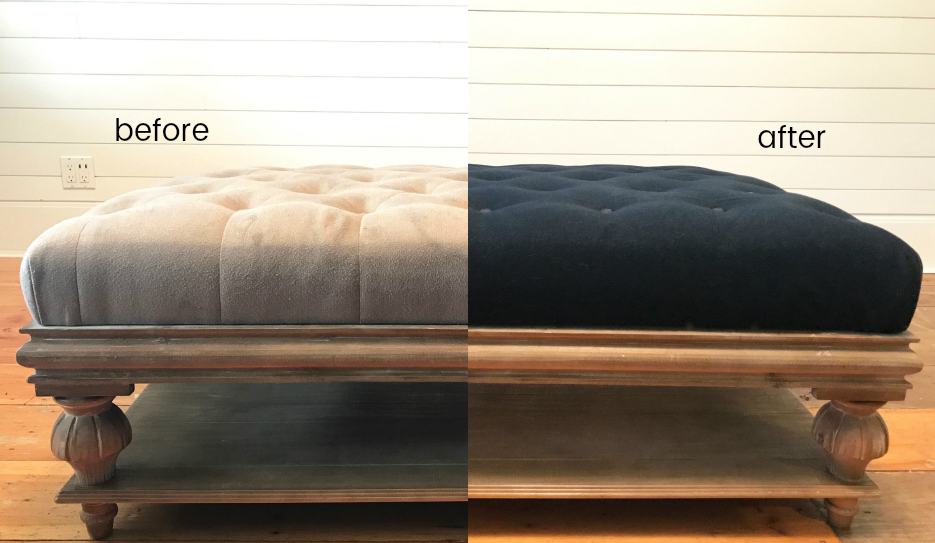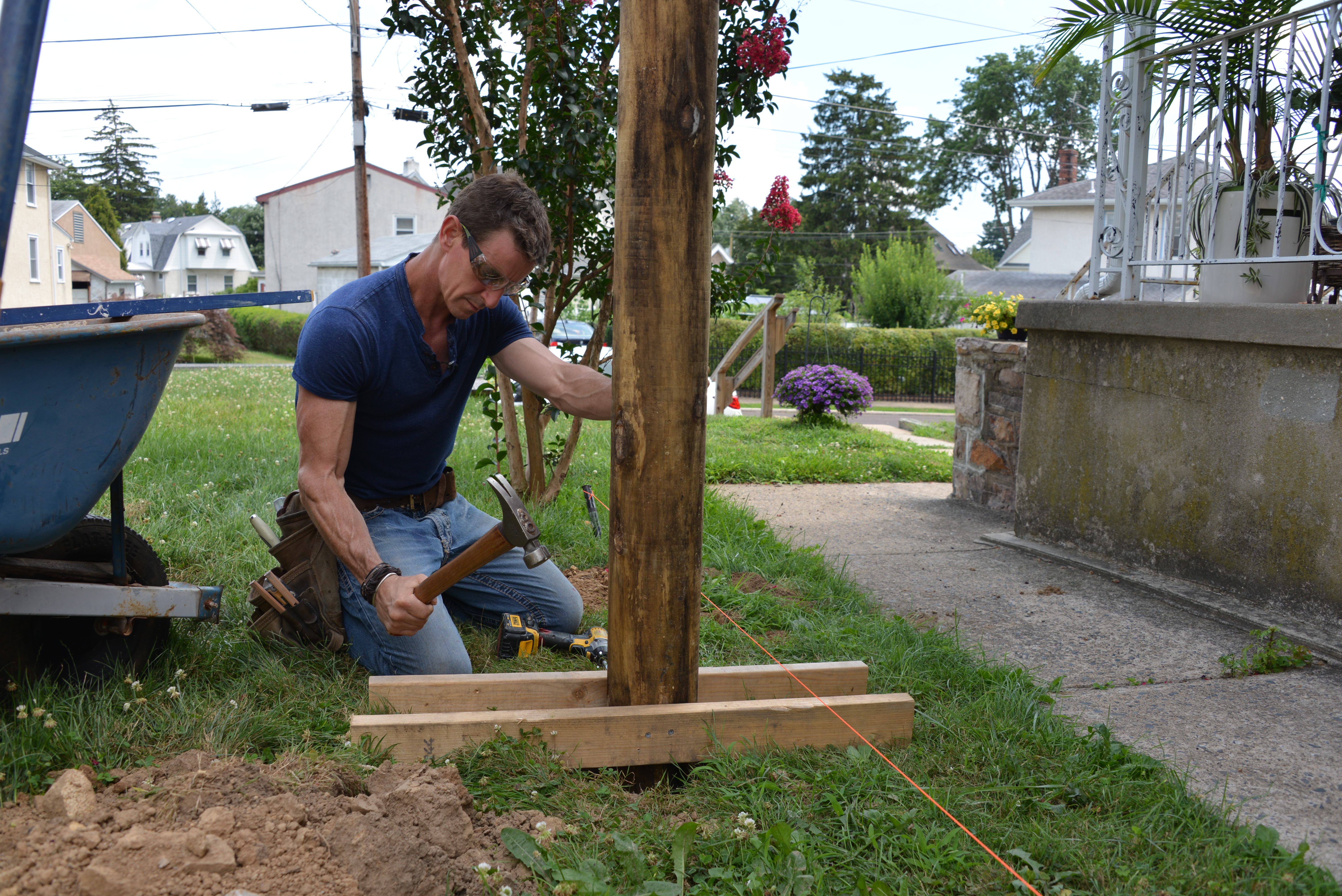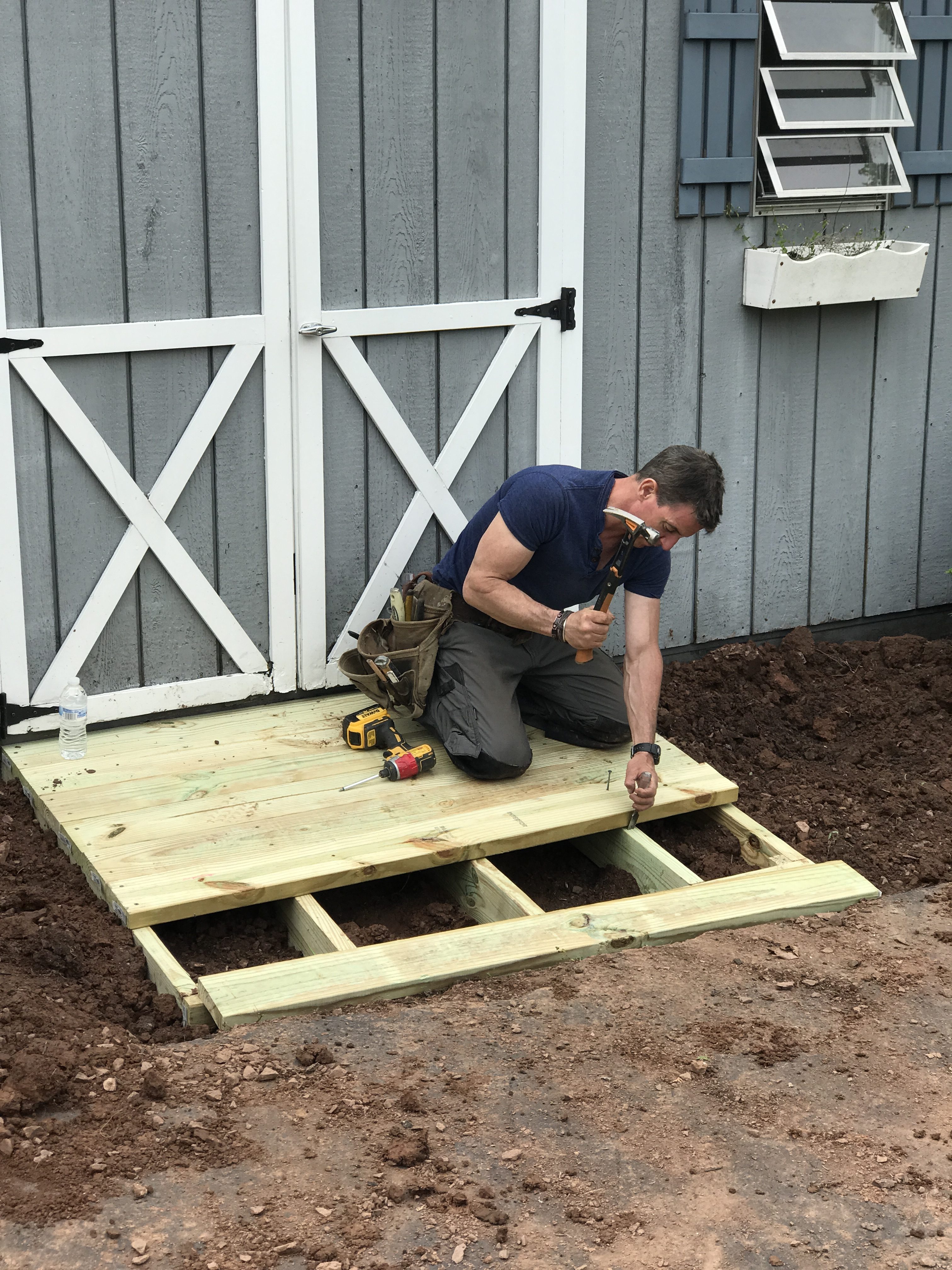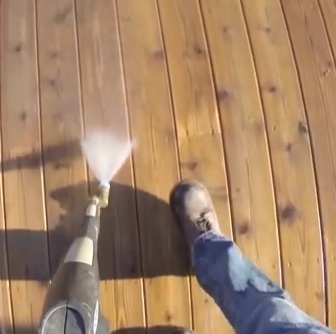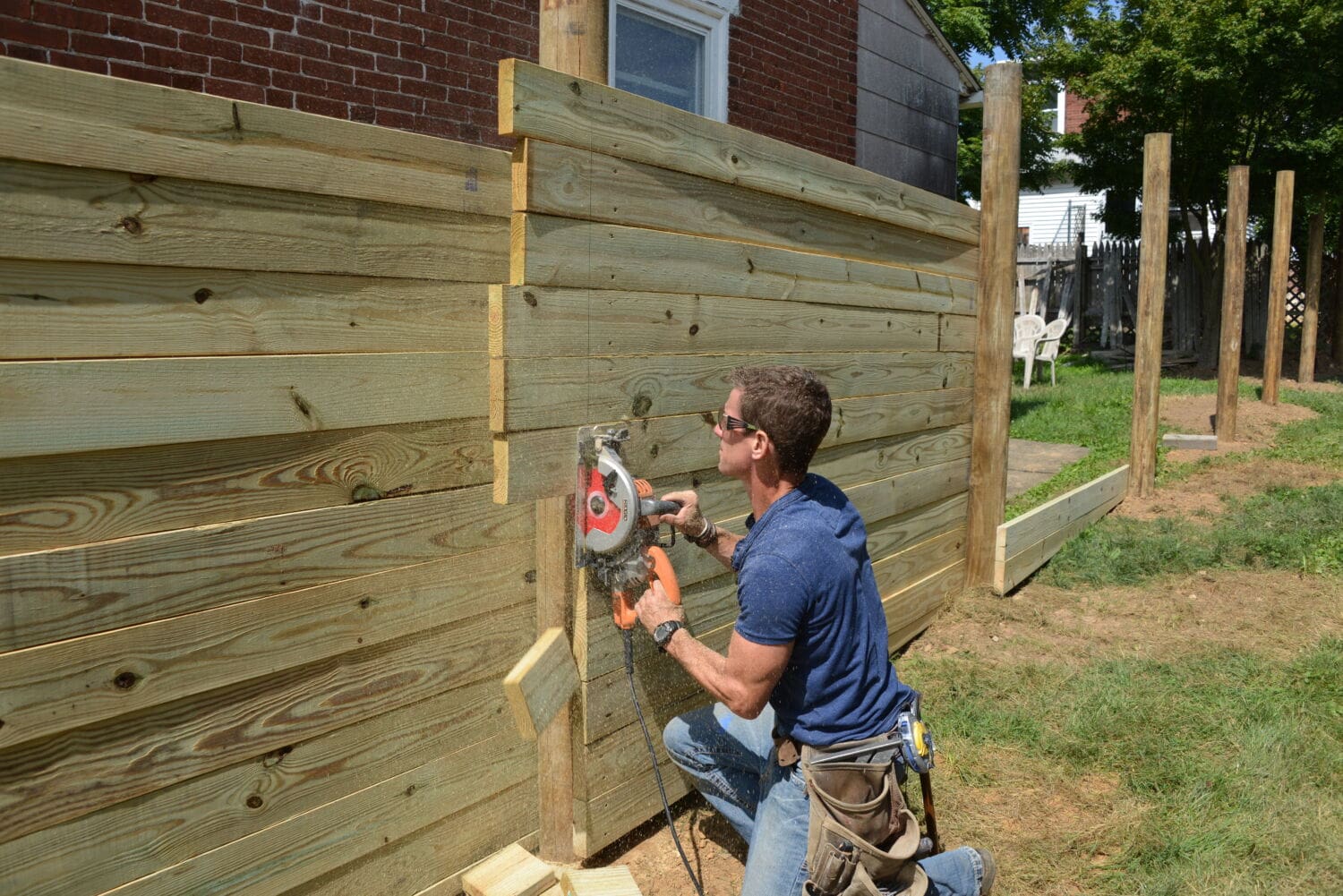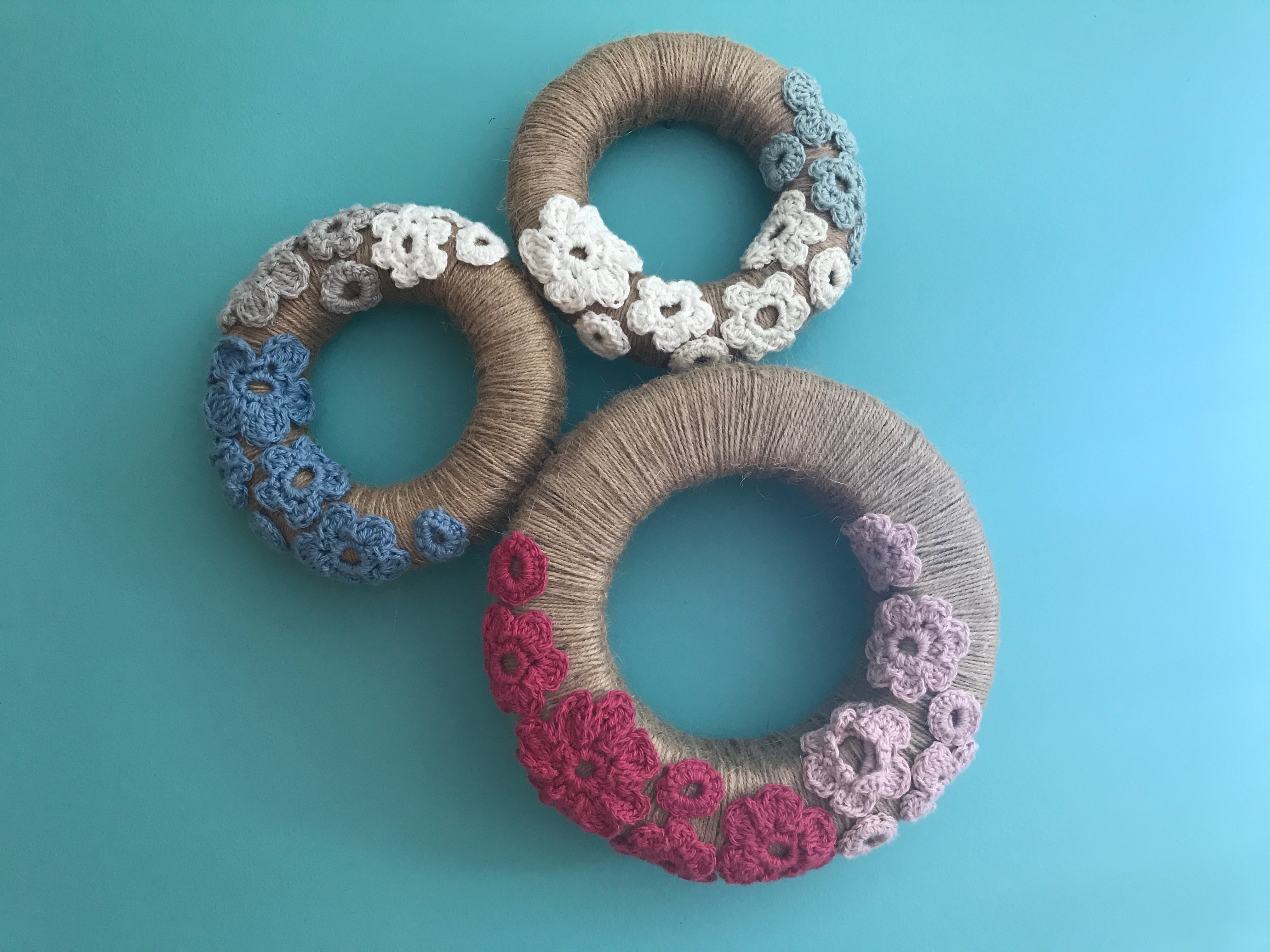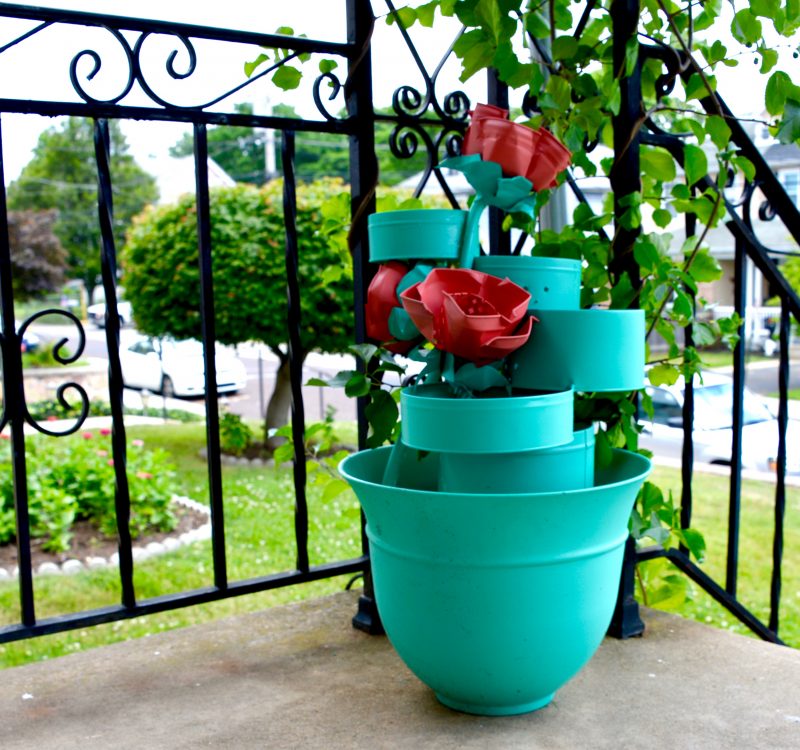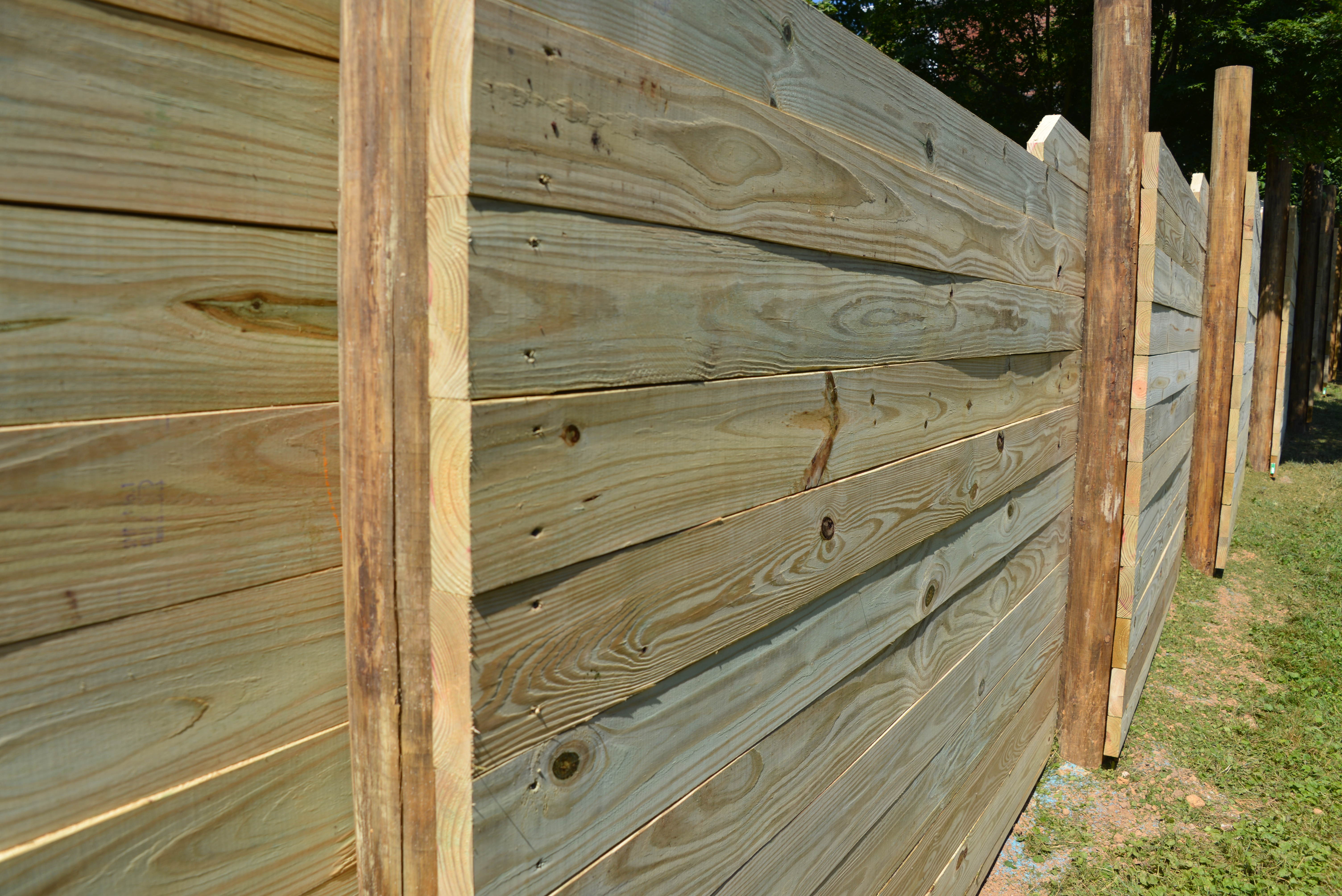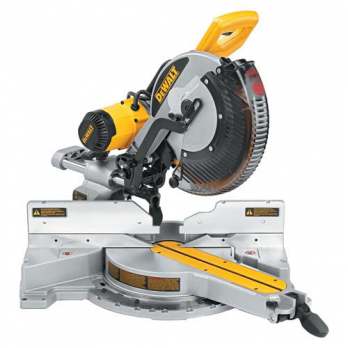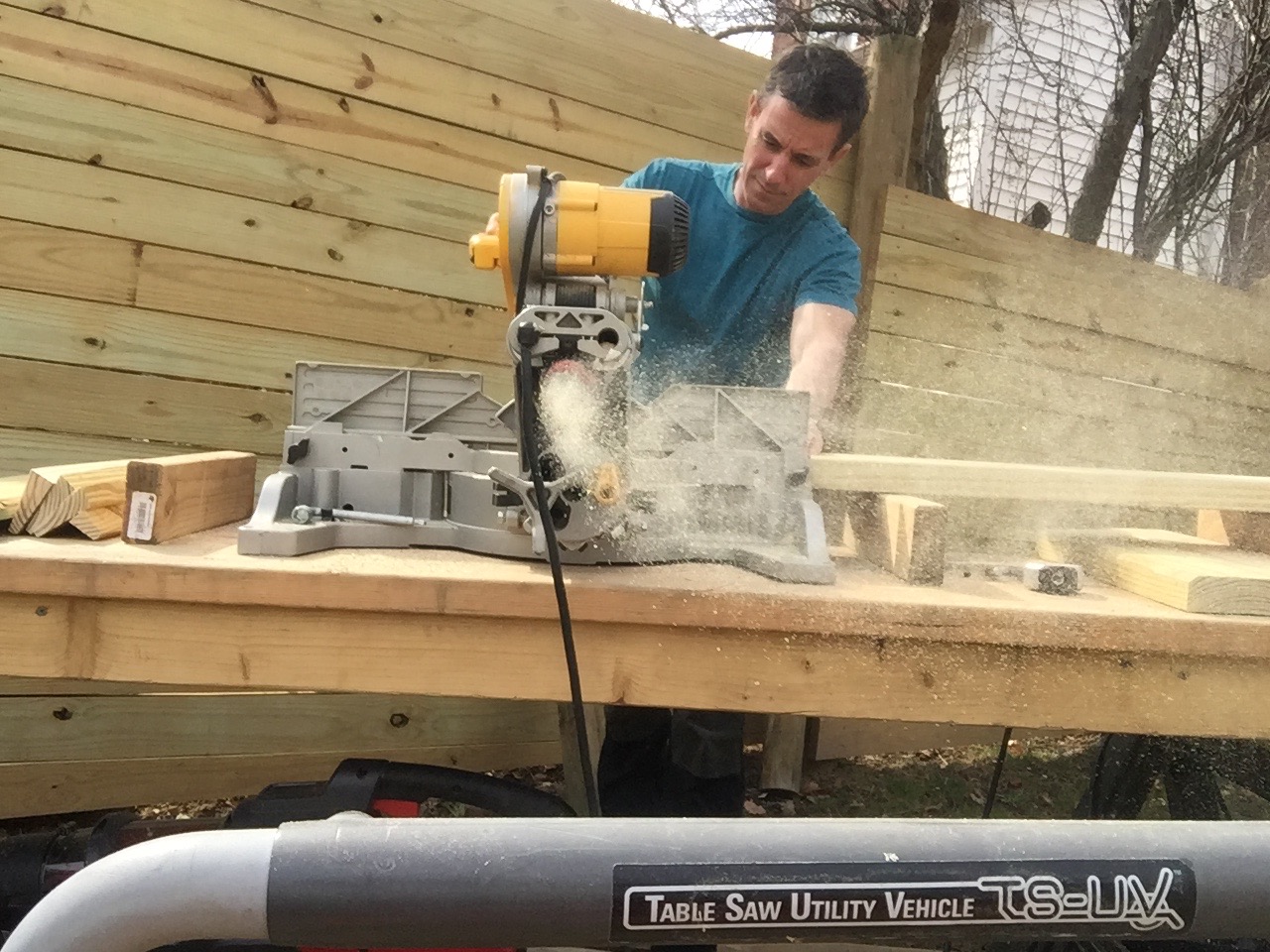In my world, I have two versions of how to build a fence: 1) Laser-straight and awesome-looking. 2) NOT laser-straight and NOT awesome-looking.
This blog and video have a few tips about achieving the first one and avoiding the second.
When I look at fences—yard fashion—I can tell if whomever installed it knew how to build a fence or just knew how to do some portions of the project.
I’m pretty passionate about fences and I love building them; not just installing components, but building something cool and unique. Wood is my go-to for that.
Here’s the how to
The first thing I need for a straight fence is a straight line, which is easier said than done. What you really need is a straight layout line—I’m talking mason’s string here—that stays straight throughout the entire project.
I use a gas-pipe and hammer it in the ground and an angle. It literally drives in like a huge nail. I use a 4-pound club hammer to drive it straight.
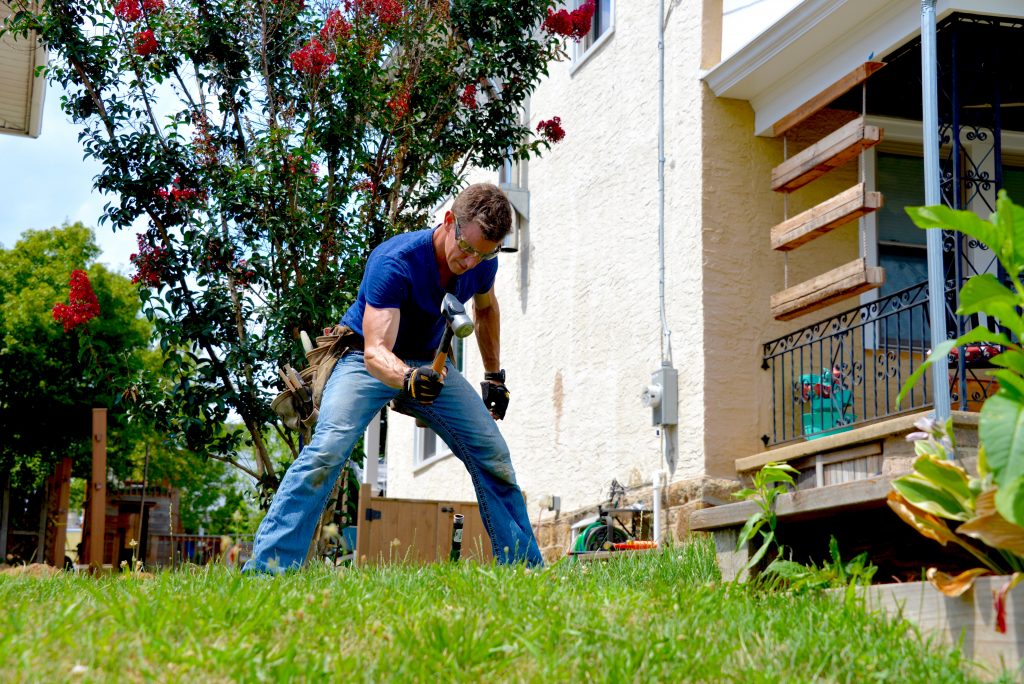
Then, of course, you need materials that last long and look good doing it so, I got creative with this fence design and used round, pressure treated Southern Pine poles.
As I say, I don’t just like this fence, I love it!
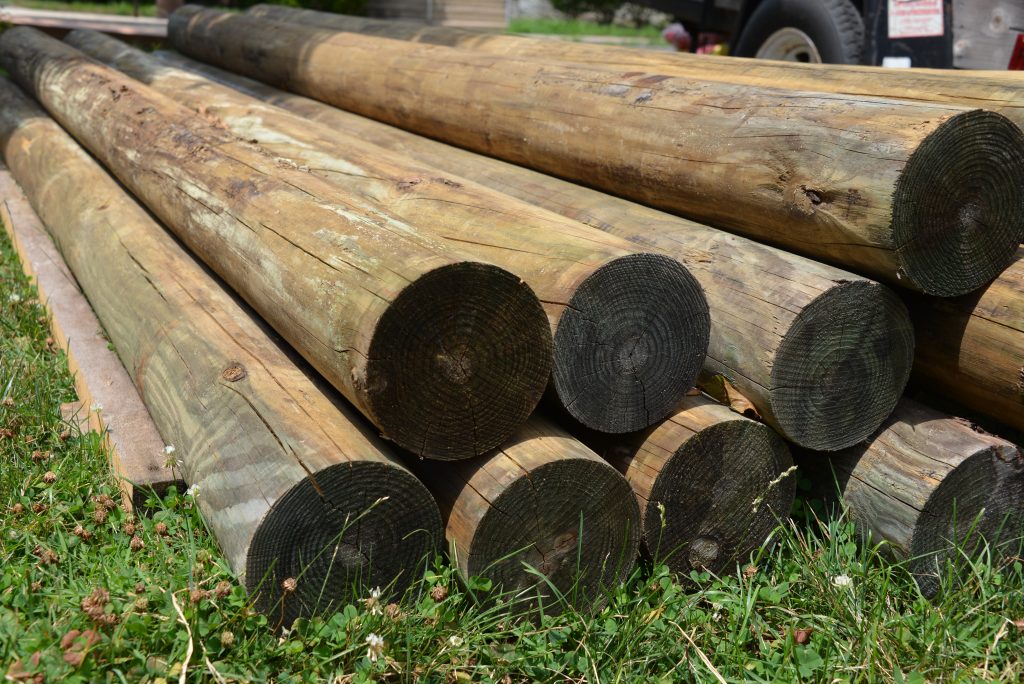
It helps if you know how to tie a few knots like a bowline knot and a trucker’s hitch, which you can see in this knot-tying video. As it turns out, it helps in how to build a fence and about a million other DIY and home improvement jobs.
What goes up, must go down first, as in digging the holes. For some tips on that, may I refer you to this video on how to dig a hole.
Finally, positioning and stabilizing the posts in the holes helps quite a bit too. The 4-pound hammer comes into play again for love-tapping the post. Combined with 2-by bridging across the hole, it keeps posts in place while concrete cures.
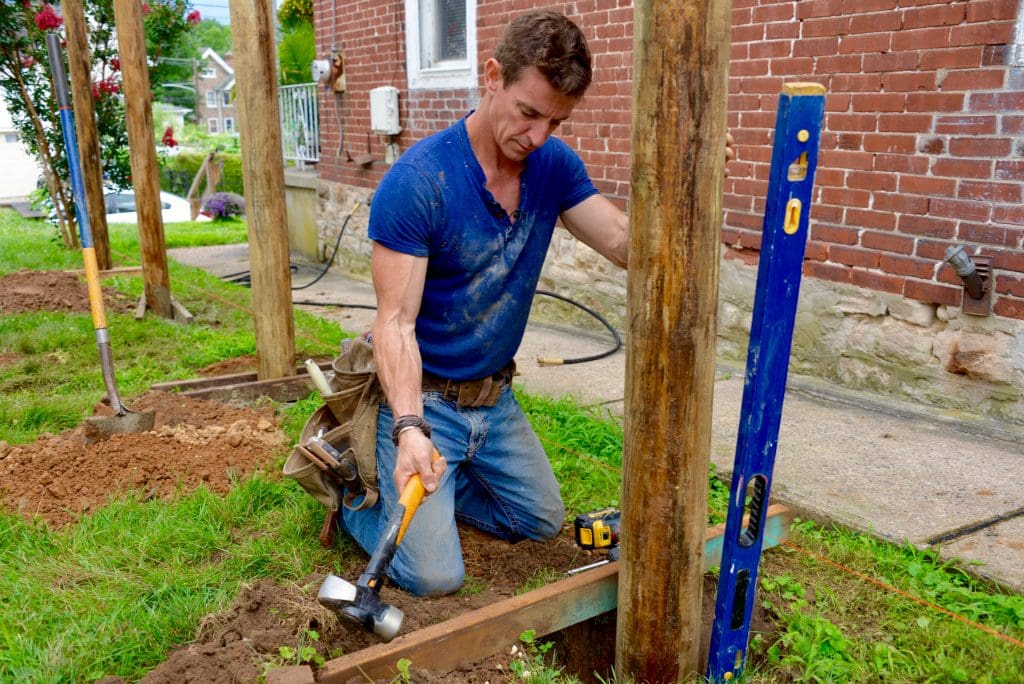
I don’t want to lay it on too thick, but a straight, beautiful fence says a lot in very few words (fences don’t really talk, I know that). It says that whomever installed it knew what they were doing and were willing to do the work right and use the best, most beautiful materials.
That says a lot about who built it and the owner of the yard it lives in.

